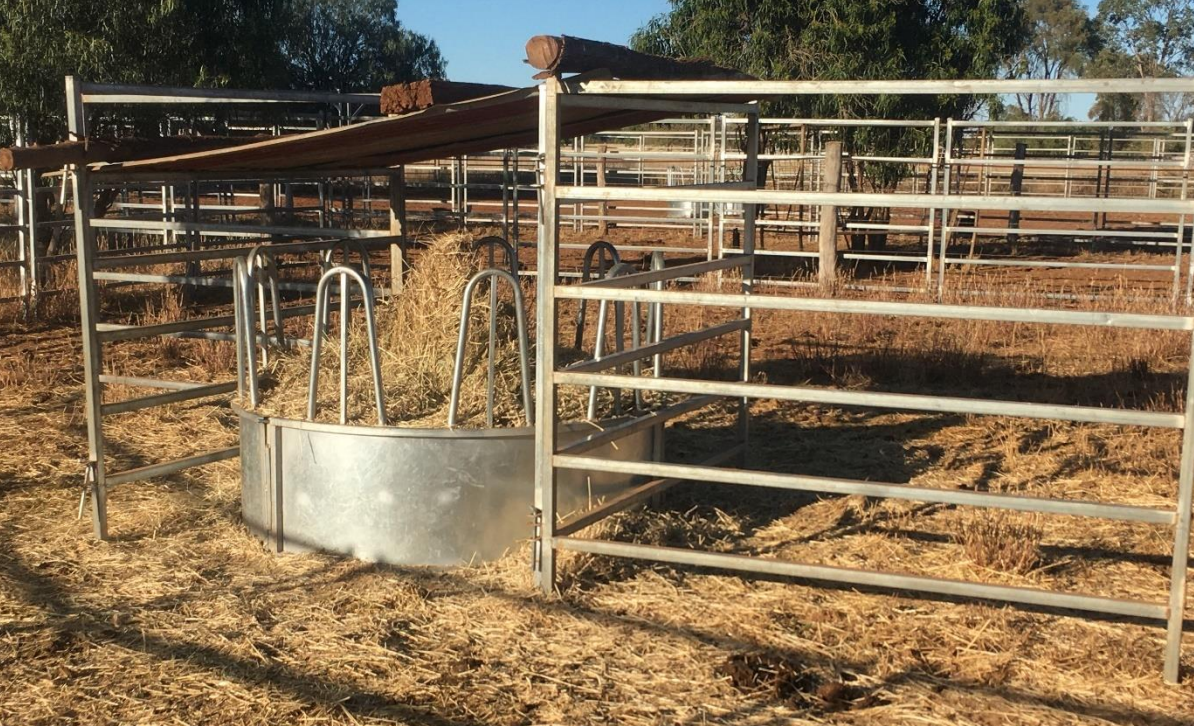Early weaning and mitigating risk in dry times
A GrazingFutures Case Study — compiled by Cox Inall Communications
Mark and Carolyn Redgen run a 1200 ha breeding and weaner turnoff operation primarily on “The Rockies” south of Roma. As conservative stockers, the Redgens have always focused on sustainable management practices to maximise their land and livestock condition. In this light, the Redgens decided to explore early weaning as a management tool during ongoing drought conditions. Early weaning enhances cow productivity and prioritises calf health during dry times. Relieving the breeders of the lactational burden will reduce the cow’s nutritional needs, thereby conserving vital groundcover.
Early weaning during dry times
To effectively integrate early weaning into their drought management strategy, the Redgens actively engaged in many learning opportunities. Of particular note, they attended the GrazingFutures and Southern Queensland Landscape ‘A yarn at the yards’ and the Désirée Jackson-led ‘Making sense of early weaning’ webinar. These events provided the information and resources the Redgens needed to implement the new strategy during prolonged drought in 2019.
Looking to reduce their stock numbers and relieve grazing pressure, the Redgens weaned calves at 12-16 weeks. This is in contrast to the traditional weaning age of 9 months. They also placed 10% of their herd into a local feedlot for eight weeks, enabling cattle to meet MSA grid specifications at slaughter.
The Redgens cited saleability and flexibility as the core benefits of early weaning.
“Early weaning allowed us to maintain flexibility in our enterprise. We were able to sell our older cows earlier, and at a higher weight, condition and value. We reached a price point that was well above the average during those times,” Mr Redgen said. “The early weaning process allowed us to cull more productively. It increased cash flow to our enterprise and mitigated some of our losses and risk during these dry times.”
The Redgens kept the weaners in the yards for two weeks providing supplementary feed and high quality hay (Figure 1). The weaners were then run in a holding paddock for four weeks with supplementary feed, hay and copra. Weaners also received a 5-in-1 vaccine.

“During dry times, we provided calves with a high quality diet to maximise their growth potential.” said Mr Redgen.
“And to help facilitate the change for the calves, we began feeding them the high protein feed, copra meal, while still on the cow (Figure 2). In the future, we’ll also look at limestone addition to compensate for the lower levels of key nutrients in the copra-based ration.”
Additional tips and tricks
Educating calves to feed pre-weaning is an essential part of the Redgen’s system. Doing so allows weaners to be moved out of the yards and into pasture sooner, reducing hay expenditure.
“With no extra costs outside feed and lick, the weaners came through in strong condition, were well educated and adapted to the supplementary feed before returning to the paddock,” Mr Redgen said.
Through this weaning and feeding system, the Redgens reduce stress on the calves, minimising weight loss.
“The calves that have come through the early weaning process have been extremely quiet. As a result, we didn’t need to cull any for bad temperament. The early weaned calves are also more comfortable moving in and out of the yards and are well educated to being worked by dogs,” Mr Redgen said.
In terms of labour efficiency, although early weaning itself requires more intensive management at the time, the cattle are quieter and far easier to handle in the long-term. In effect, husbandry and overall observation of herd health became simpler and more efficient.
Benefits provided by flexibility
The decision to early wean proved to be a good short-term drought management strategy. The management model showed that it was able to be flexible and adjust to seasons and opportunities. It also minimised some of the expected dry-induced stock and financial losses.
Today, the Redgens are seeing the benefits of this system extending beyond improved weaner performance. They have noticed enhanced productivity and financial returns, while maintaining and managing land condition.
The Redgens commitment to sustainable land and livestock management practices has proven to be a good strategy when withstanding drought. Protecting pastures has helped maximise the productivity of the land, while low stocking rates has given the soil and pastures the opportunity to rehabilitate. The resulting healthy pastures more readily respond to rain, creating even more resilient pastures for future grazing.
Based on the success and management opportunities available through early weaning, the Redgens will use early weaning as a drought management strategy in perpetuity.
Complementing their conservative and sustainable management approach, early weaning has positioned the business in good stead moving forward by maximising land and livestock performance.

This article is a slightly abridged version of the case study created by Meg Pearce (Cox Inall Communications), Mark and Carolyn Redgen (The Rockies) and Jed Sommerfield (DAF Beef and Sheep Extension, Charleville), March 2021. To read the full case study, click here.